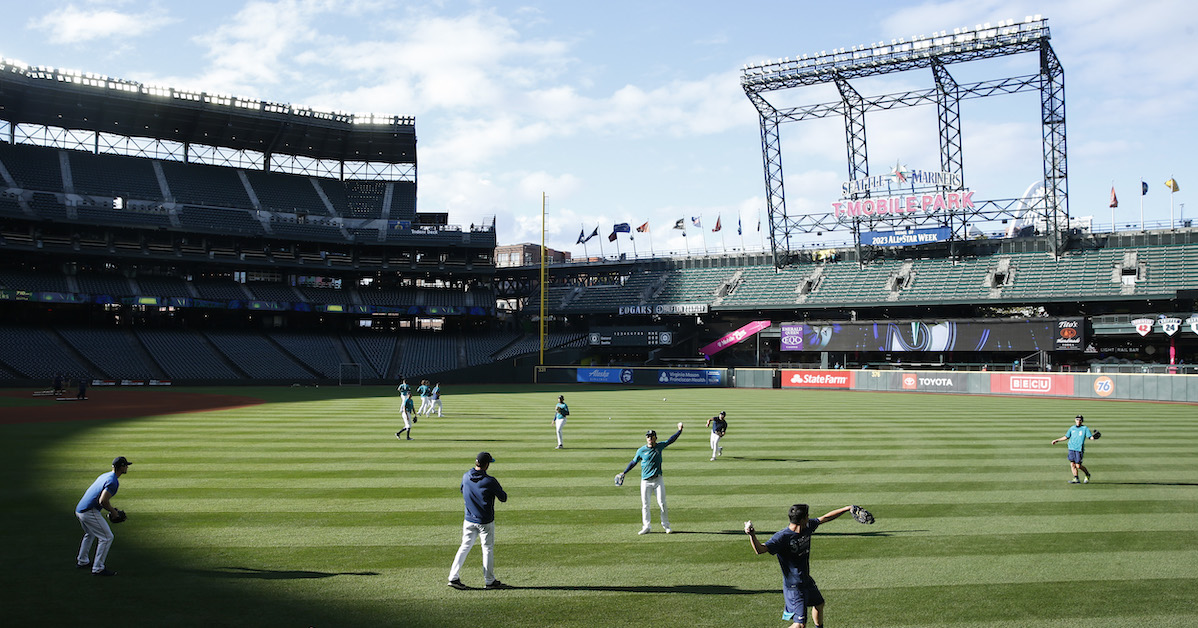Doug Latta’s name is well known in the baseball world, and for good reason. The long-time hitting instructor has worked with a plethora of players over the years, including a number of major league notables, at his Ball Yard facility in Northridge, California. Latta has been featured here at FanGraphs previously — most recently by Sung Min Kim in 2019 — and we’ll hear from him again in the latest installment of our Talks Hitting series.
———
David Laurila: I’ve asked a lot of hitters if they view hitting as more of an art or more of a science. A lot of people reading this might assume you’d say science, but is that actually the case?
Doug Latta: “No, and it’s not just both. It’s more than that. It’s a combination of science and art and everything in between. People look at a swing as a mechanical thing, and they’ll look at all of the [physical] elements, like movements, but there is an incredible psychological-and-mental side that plays into hitting in a game. You’ve got to transcend the mechanical side, because hitting is quite a feat at the major-league level.”
Laurila: Does the swing itself get overemphasized by some hitting instructors?
Latta: “I think a lot of instructors look at the swing itself, and part of that is, ‘This was a swing that did X in a game versus the swing you took the other day.’ I’ve always seen it as how we move. The things that may or may not affect us happen long before we initiate the swing. We talk about movement patterns and how that plays a role in what swing is going to come out. If your body isn’t working in an optimal way, the swing that’s going to come out is going to be affected.”
Laurila: You shy away from addressing guys you work with, but I assume Hunter Pence is fair game given that he’s spoken openly about what he learned from you?
Latta: “He would definitely be an outlier example of a body that moves in a different way than most other people. It’s almost an awkward movement pattern. Hunter came to us and make some changes during the 2018 offseason, and his 2019 year was incredible. He was able to integrate the changes, which were so different than everything else his body had been doing for 28 years.
“It’s also not only what his body was patterned to do, but how he would think about hitting — the concepts of hitting and how he would regard his moves. So, when the changes were made, it wasn’t just movements. It was thoughts. I love hearing Hunter talking about hitting now, because late in his career he was able to tap into the movements.”
Laurila: With the caveat that not every hitter is the same, what do all hitters need to do to be successful? What are the core components?
Latta: “I think the biggest core component is they have to move athletically. I’m constantly talking about balance, because balance is the integral element to athletic movement. And in hitting, a lot of moves we make really aren’t based on balance. When we start moving better, from the standpoint of clean moves to a position to hit, this changes a lot of things for the positive. For instance, timing and vision are improved. These are intangible elements that people often don’t consider. They’re looking at a hitter and saying, ‘Let’s change a swing,’ whereas when we move better, we see the ball better. If seeing the ball better isn’t a good thing for a hitter, I’m not sure what it is.
“When people start understanding that small compensation moves will affect how you see the ball — and how you move to do that — it makes sense that you essentially need to make hitters more efficient. Pitching has been getting really far ahead from the standpoint of development over the last 10 years, and not just in the major leagues; it runs all the way down to the minor leagues into the amateur side. The quality of pitching is going up, so hitters need to be more efficient. When the body moves efficiently, hitters are so much more effective, and that goes well beyond ‘executing a swing.’
Read the rest of this entry »

